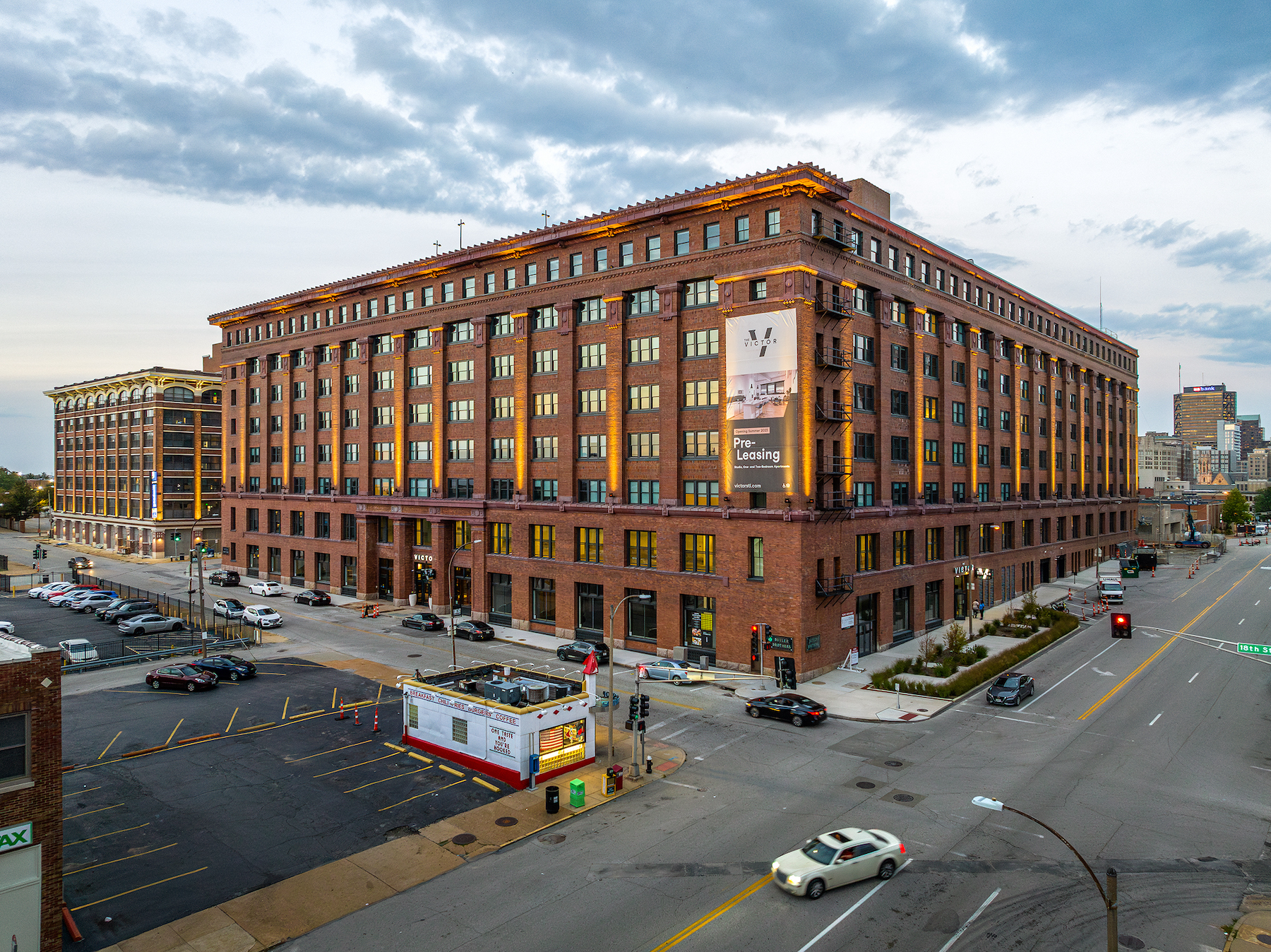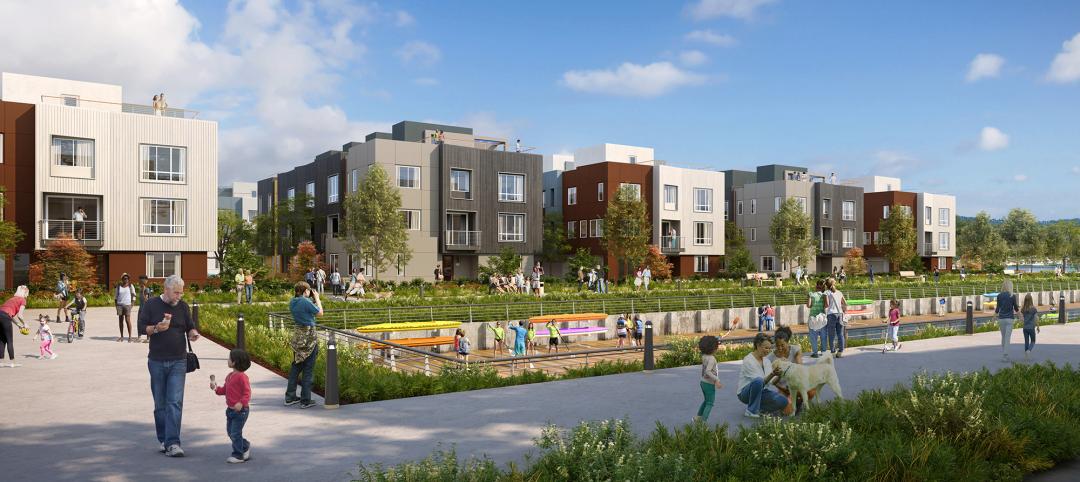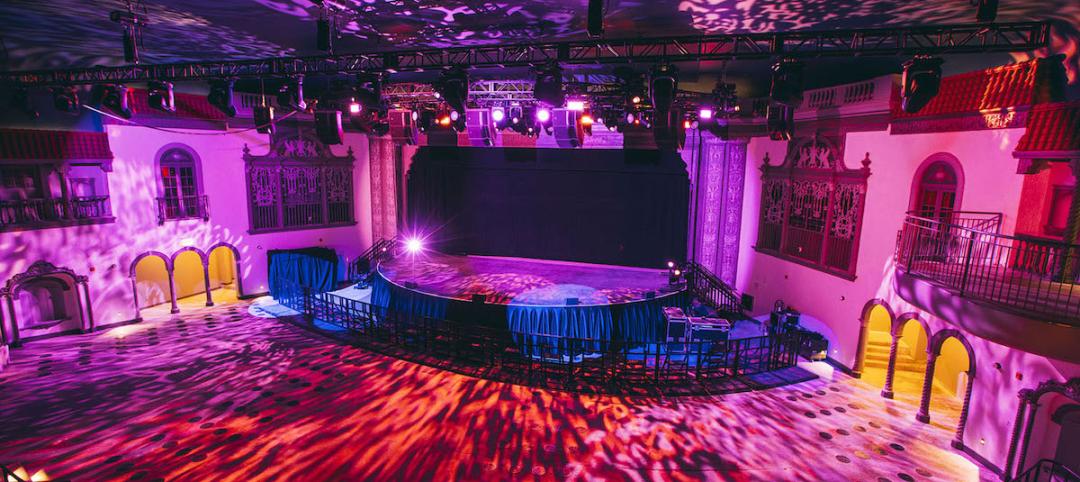The Butler Brothers Building opened in 1906, in St. Louis’s former Garment District. The 735,000-sf building served as a warehouse distribution center, and at the time of its construction was one of the largest reinforced concrete structures west of the Mississippi River.
Last June was the one-year anniversary of the completion of this building’s adaptive reuse transformation as The Victor, a multifamily community with nearly 400 apartments, retail and coworking spaces, and amenities.
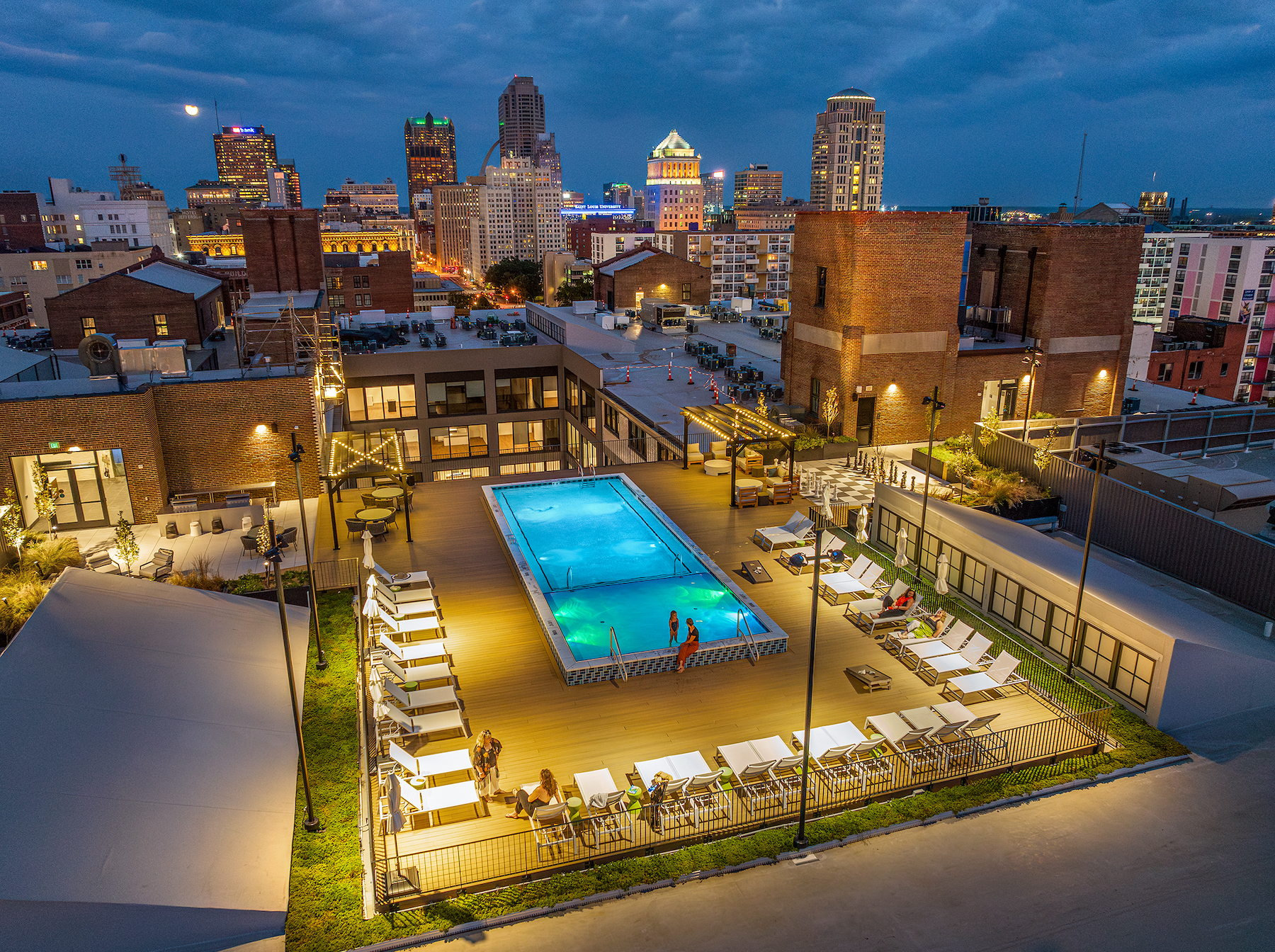
The Victor brought back to life a building that had been vacant for more than two decades, said Joel Fuoss, AIA, LEED AP, a Principal with Trivers, the architect-interior designer on this $130 million project, which was developed by Development Services Group.
Residents of The Victor have access to amenities that include an expansive rooftop terrace with a pool, a pickleball court, sundeck, dog park, fitness center with yoga and Pilates studios and a golf simulator, a parking garage, coworking and conference spaces, and outdoor courtyards. The building itself is located next to St. Louis CITY SC’s CityPark soccer stadium.
The apartments range from a 531-sf studio that starts at $1,345 per month to a 1,384-sf two-bedroom unit starting at $2,578 per month.
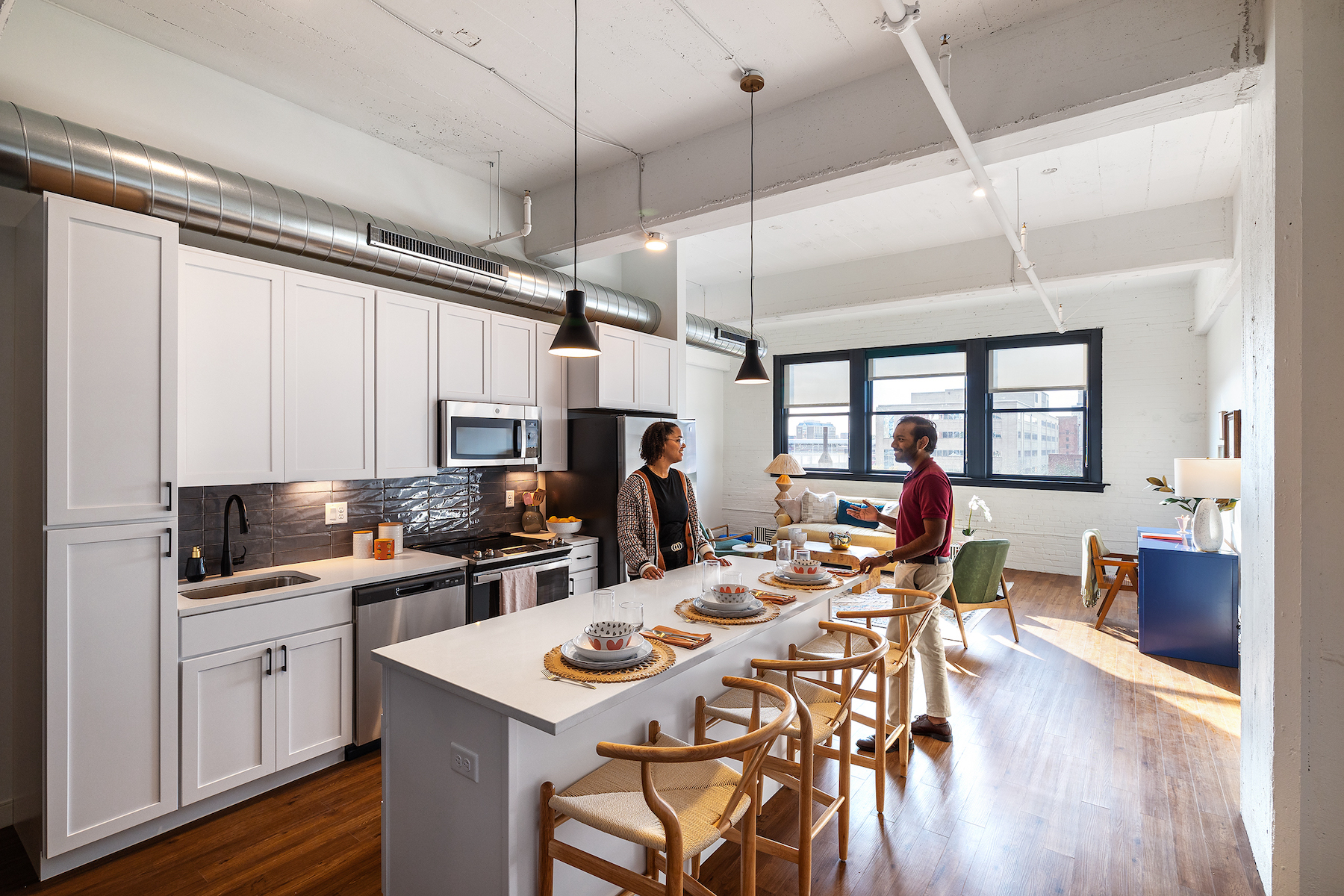
Adaptive reuse respects the past
Trivers and its design team restored the building’s exterior brick to its original color and revitalized the remaining terracotta cornices. The design retained the building’s clam-shell style garage doors that once opened for horse-drawn wagons. The building’s history was also incorporated throughout the interior’s renovation, including patterns and colors from early 20th Century fashion trends, and an oversized chessboard on one of the rooftop lounges that acknowledges the building’s location in a district and the former Harmonie Hall site that hosted the 1886 World Chess Championship.
Gary Prosterman, President and CEO of Development Services Group, said that his company and a team led by members of Trivers and Paric Corp., the project’s general contractor, conducted due diligence on the building a year before construction started to identify and address any problematic issues. “An undertaking this significant would not be p possible without the attention to detail and historic building expertise that the Trivers team brings to the table,” he said.
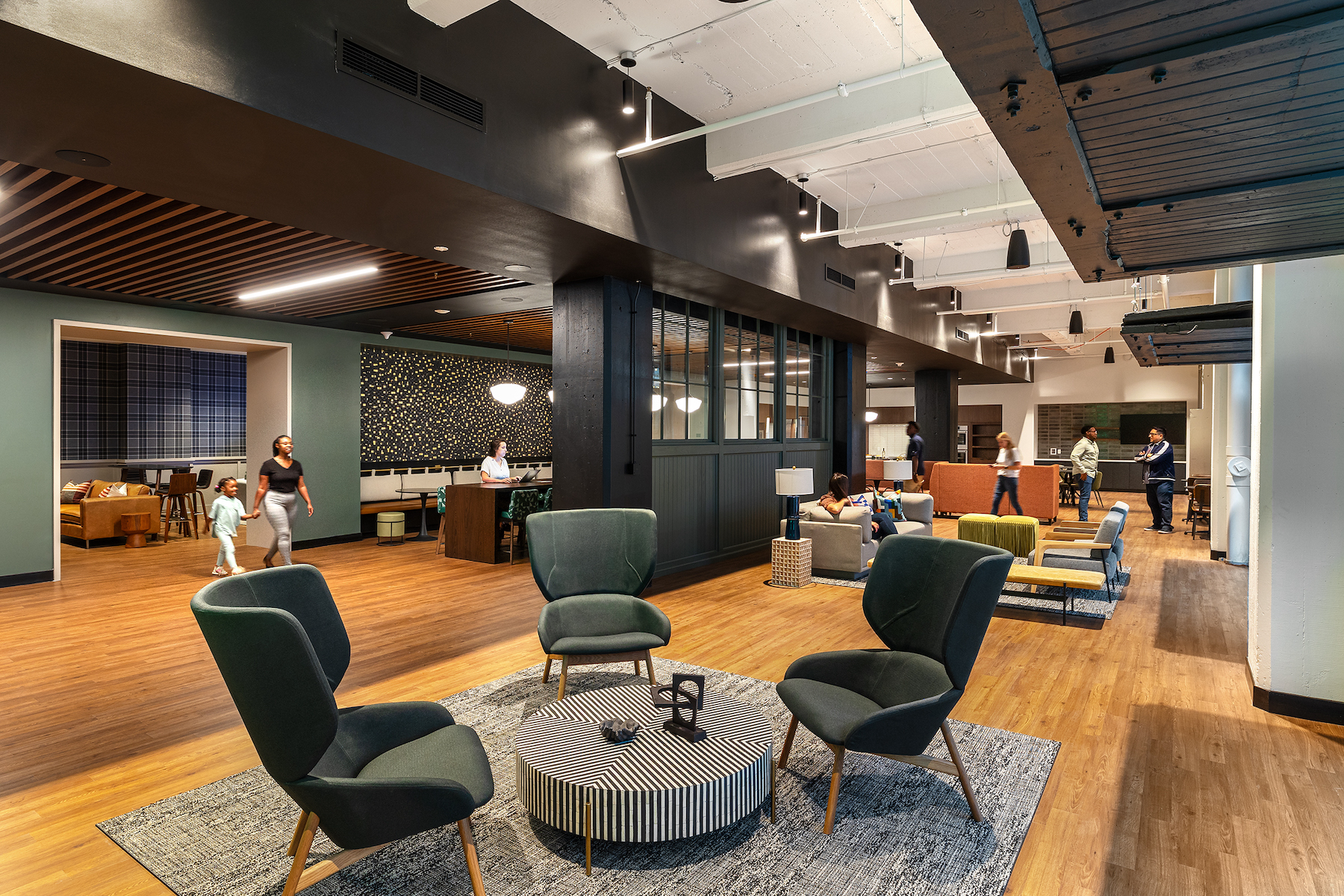
By repurposing the building’s existing concrete and masonry, the building team minimized the need to extract and produce new materials, which are carbon intensive. “The embodied carbon put into this building nearly 120 years ago would take St. Louis’ Forest Park [neighborhood] another 100 years to offset if built today,” said Fuoss.
Other AEC firms on the project team included IMEG (MEP engineer), KPFF Consulting Engineers (SE), Civil Design Inc. (CE), Arbolope Studio (landscape architect), Reed Burkett Lighting Design (lighting designer), Cohen Hilberry Architects (accessibility consultant), and Wollenburg Building Conservation (masonry consultant).
Related Stories
Adaptive Reuse | May 9, 2024
Hotels now account for over one-third of adaptive reuse projects
For the first time ever, hotel to apartment conversion projects have overtaken office-to-residential conversions.
MFPRO+ Special Reports | May 6, 2024
Top 10 trends in affordable housing
Among affordable housing developers today, there’s one commonality tying projects together: uncertainty. AEC firms share their latest insights and philosophies on the future of affordable housing in BD+C's 2023 Multifamily Annual Report.
Retail Centers | May 3, 2024
Outside Las Vegas, two unused office buildings will be turned into an open-air retail development
In Henderson, Nev., a city roughly 15 miles southeast of Las Vegas, 100,000 sf of unused office space will be turned into an open-air retail development called The Cliff. The $30 million adaptive reuse development will convert the site’s two office buildings into a destination for retail stores, chef-driven restaurants, and community entertainment.
Adaptive Reuse | Apr 29, 2024
6 characteristics of a successful adaptive reuse conversion
In the continuous battle against housing shortages and the surplus of vacant buildings, developers are turning their attention to the viability of adaptive reuse for their properties.
Mixed-Use | Apr 13, 2024
Former industrial marina gets adaptive reuse treatment
At its core, adaptive reuse is an active reimagining of the built environment in ways that serve the communities who use it. Successful adaptive reuse uncovers the latent potential in a place and uses it to meet people’s present needs.
Mixed-Use | Apr 9, 2024
A surging master-planned community in Utah gets its own entertainment district
Since its construction began two decades ago, Daybreak, the 4,100-acre master-planned community in South Jordan, Utah, has been a catalyst and model for regional growth. The latest addition is a 200-acre mixed-use entertainment district that will serve as a walkable and bikeable neighborhood within the community, anchored by a minor-league baseball park and a cinema/entertainment complex.
Adaptive Reuse | Apr 5, 2024
McHugh Construction completes restoration of Chicago’s historic Ramova Theatre
Adaptive reuse project turns 1929 cinema into a live performance venue, adds a brewery and a taproom, and revives the Ramova Grill in Chicago’s Bridgeport neighborhood.
Adaptive Reuse | Mar 30, 2024
Hotel vs. office: Different challenges in commercial to residential conversions
In the midst of a national housing shortage, developers are examining the viability of commercial to residential conversions as a solution to both problems.
Cultural Facilities | Mar 26, 2024
Renovation restores century-old Brooklyn Paramount Theater to its original use
The renovation of the iconic Brooklyn Paramount Theater restored the building to its original purpose as a movie theater and music performance venue. Long Island University had acquired the venue in the 1960s and repurposed it as the school’s basketball court.
Adaptive Reuse | Mar 26, 2024
Adaptive Reuse Scorecard released to help developers assess project viability
Lamar Johnson Collaborative announced the debut of the firm’s Adaptive Reuse Scorecard, a proprietary methodology to quickly analyze the viability of converting buildings to other uses.



